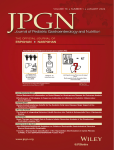Inflammatory Bowel Disease in Children and Adolescents in Sweden, 1984–1995
ABSTRACT
Background:
A prospective study of inflammatory bowel disease (IBD) in Sweden was performed to investigate whether the incidence and morbidity have changed from 1984 through 1995.
Methods:
Children 15 years of age or less with IBD were included—i.e., those with a definite diagnosis of ulcerative colitis (UC) and Crohn's disease (CD) and those classified as having indeterminate colitis (IC) and probable Crohn's disease (PCD). The study covered 56.5% of the pediatric population of Sweden.
Results:
The diagnosis of IBD was made in 639 children, which corresponds to a mean annual incidence of 5.8 per 100,000. The incidence increased from 4.6 per 100,000 per year from 1984 through 1986 to 7.0 from 1993 through 1995. It reflected an increase in UC from 1.4 to 3.2 per 100,000 per year, which is a significant yearly percentage of increase (8%; confidence interval, 2–14%;P < 0.05). In contrast, no change occurred in the incidence of CD (1.2–1.3 per 100,000). The incidence of IC and PCD also remained fairly stable. The percentages of children who underwent surgery decreased from 17.3% in the first 6 years to 4.6% in the last 6 years (P < 0.001). Surgery was performed in 27.7% of CD and 5.3% of UC cases. The median age at diagnosis was 12.2 years for UC, 13.0 years for CD, 11.2 for IC, and 11.2 for PCD. At diagnosis, 48 children (7.5%) were 5 years of age or less, whereas most of the patients were 11 years of age or more (398 children, 62.3%).
Conclusions:
In Sweden, the incidence of UC has increased, whereas that of CD remains the same. A significant number of children were classified with IC and PCD. In most children, IBD was diagnosed when they were 11 years old or more, but some cases were detected even in those below 6 years of age. A decrease in the frequency of surgery occurred during the study.




